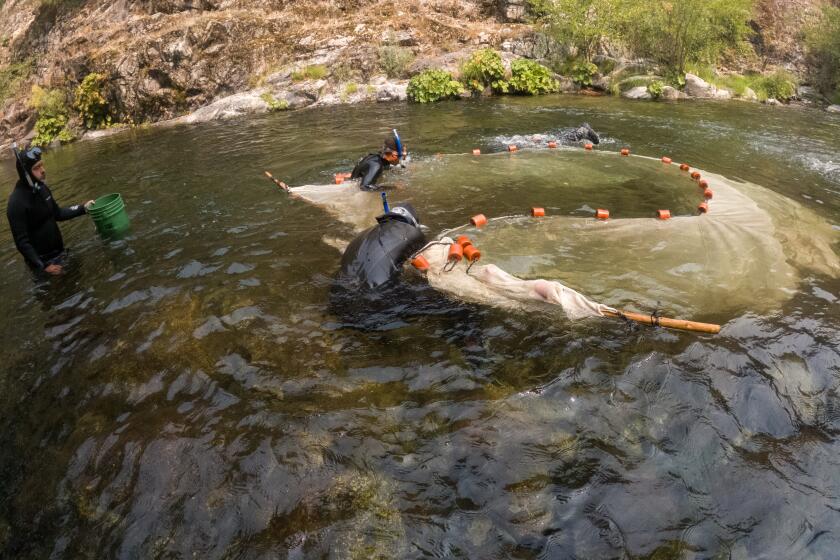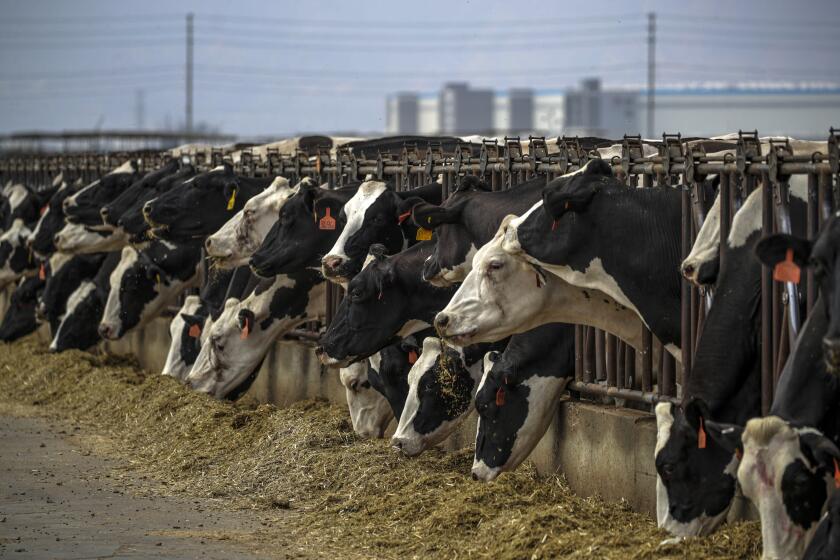County Backs Tracking Research on Mule Deer : Wildlife: Expansion of highway system is seen as a threat to the animals. Biologists hope to steer planners away from cutting up habitats.
County supervisors voted Tuesday to back an ambitious mule deer tracking study intended to save the animals from destruction as a network of new highways crisscrosses their habitats in south and east Orange County.
Armed with $190,000--$127,000 from the Transportation Corridor Agency and another $63,000 from the county--researchers will begin the next phase of their tracking and habitat study this week. Starting Thursday or Friday, they will make their first round of checks to see whether deer have taken the bait from traps placed in the test area.
Although hundreds, perhaps thousands, of the mule deer roam Orange County, and the animals are not considered endangered, sponsors of the study said it is needed to protect the animals from roads that might otherwise cut up their habitat and leave them vulnerable.
“This is a small way to head off an animal becoming endangered,” said Gary Medeiros, a senior planner with the county Environmental Management Agency. “If we’re able to understand the deer’s behavior, when we design the corridor we can try to protect them.”
About 30 of the animals will be monitored for nearly two years to develop information about their range, movements and seasonal migrations. The researchers will prepare monthly reports and will submit recommendations regarding alignment and improvements to the roads that would allow them to be built while doing as little damage to deer herds as possible.
“We’re trying to do this so that planners can make changes early in the design process, rather than waiting until the bulldozers are ready to go,” said Doug Padley, field biologist on the study. “We don’t really have any hard information on the deer, and this is to fill in some gaps that exist.”
The study, scheduled for completion in January, 1992, will recommend areas where bridges, culverts and under crossings should be built into the eastern and foothill transportation corridors. Those improvements would allow deer to cross the road without being hit, officials said.
To do that, researchers first need to know where the animals spend most of their time and the patterns of their movements. Radio collars on the deer will provide the researchers with that information, which will be forwarded to the corridor planning agency.
First, though, the deer need to be captured so they can be collared, and that process begins this week.
Traps already are out and baited with applesauce--earlier traps baited with alfalfa did not get much response, so researchers switched to the tastier substitute. Once the animal is accustomed to the netted cage, trip wires will be set so that a door closes behind the deer when it enters.
Captured deer will get a quick physical and then will be collared and released.
That trapping procedure replaces one used for tagging mule deer in the eastern part of the county earlier this year. In that effort, nets were strung across canyon bottoms and deer herded into them with helicopters.
Waiting researchers would quickly untangle and free the deer, but some officials worried that the process was “pretty stressful for the animals,” Medeiros said.
More to Read
Sign up for Essential California
The most important California stories and recommendations in your inbox every morning.
You may occasionally receive promotional content from the Los Angeles Times.











